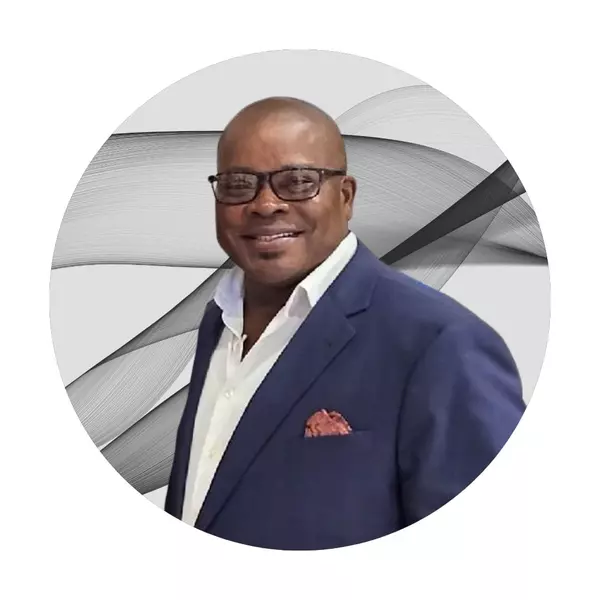A ‘simple story’ with a retro visual style
They were supposed to be on a break. Filmmaker Christian Yamane and his producers were working on a film and agreed to take a step back from that project for about a month.
“But I didn’t really feel like taking a break, so I decided that it could be fun if I made a film in the meantime. That day, I started writing ‘And Here We Are,’” he says.
That film is being screened at this year’s San Diego Asian Film Festival. The festival, Nov. 6 to 15, features more than 150 films from over 30 countries and languages and is organized each year by Pacific Arts Movement, a local nonprofit focused on highlighting Asian, Asian American and Pacific Islander films. Yamane’s seven-minute short, which was shot locally over three days this past May, is about four friends using a VHS camera to document “their search for meaning and connection,” and can be seen Nov. 8 at UltraStar Cinemas Mission Valley.
The 29-year-old writer, director, and producer lives in Poway and has done freelance production work for local companies, including Three Omens, Youth Parade, and Bad Neighbor. His next project, “Sunglasses 3: Return of the Glass,” is a short he’s submitting for next year’s festival, about three people who have to find friends in order to unlock a new pair of sunglasses from a video game; he’s a producer for “Lolo’s Last Song,” a short film by London Alexander, about a granddaughter who finally gets to communicate with her grandfather, who’s mute, by using magic pills that enable her to travel into his mind; and he’s in development for a feature length film he’s hoping to shoot in San Diego next summer. Yamane took some time to talk about “And Here We Are,” the influence of his Filipino-Japanese American heritage on his storytelling, and his aversion to making a boring film.
Q: A VHS camera seems pretty old school; is there a reason why you wanted the characters in your film to use this format of documentation, as opposed to something more current?
A: I’m a victim of nostalgia. I wish there was a deeper meaning to shooting with the VHS camera, but in all honesty, I think it just looks really cool. We shot digitally, but we switch between the two formats and combine them quite a bit in the film to give a very unique image. There was a lot of stuff I wanted to try out and to see what would actually work. To be completely honest, we weren’t sure that any of the ideas we had were possible to capture, but it worked out in the end.
Q: Can you walk us through your process for creating this film? What were you looking for when it came to casting, locations for shooting?
A: Because I had about two weeks from writing the script to getting into production, I decided to make a simple story backed with atypical visual techniques. At the time, I had recently moved back from San Francisco, so I reached out to friends and a small local network of filmmakers to see if anyone was down to clown. Casting was pretty simple—my friends who had told me they wanted to act, sometime in the years that I’ve known them, were the friends I ended up asking.
Until this film, I had only created films in San Francisco where I was always working with very talented filmmakers, so it was kind of scary working with an all new crew and two actors who’ve never acted before. It felt like the perfect time to see if I was a fraud or not. It turns out that everyone that worked on this film was also incredibly talented, so that question is postponed for now.
What I love about Poway…
It’s quiet and you really thrive if you’re a person who doesn’t want to leave the house. It’s made my appreciation for the other parts of San Diego grow each and every day.
Q: Will we recognize any of the locations in the film?
A: Yes! One of them is Red Brontosaurus Records in North Park. I usually like to secure locations before I write them into the story, but I didn’t do that for our record store scene. I reached out to a couple of record stores that said no; I cold emailed Davey and Sarah from Red Brontosaurus and they were more than happy to help. They were down for the indie cause and made our film, and lives, so much better.
Q: You’re a writer, director, and a producer. Can you talk about your start in storytelling?
A: He probably doesn’t remember me, but Professor Redmond, a screenwriting professor from City College at the time, had given me positive feedback in class and a lot of confidence to continue as a writer. It wasn’t until I was taking more production classes at City College that I came to realize that I wanted to direct whatever I wrote. However, in order to direct a script, it also needed to be produced. So, you kind of have to learn how to do it all if you want to make your own stuff.
Q: When did you first start making films? What did your early process look like?
A: I feel like a late bloomer because I started filmmaking when I was 26, so I’m pretty new to all of this. My first film was during community college. It was about a kid who sees a backpack in someone’s car and attempts to steal it. In the process, he gets locked in the back seat as the owner starts to drive around. It’s called “Child Lock.” It’s pretty bad, I would not recommend it.
Q: On your website, you mention your Filipino-Japanese American heritage; can you talk about when and where you grew up, and how your cultural background has influenced your art and the stories you tell?
A: I was born and raised in San Diego, with a brief time in Temecula. Growing up, I was pretty unaware of the importance of culture and how it shapes a lot of aspects of our lives. It wasn’t until recently that I started to make an effort to understand more about culture and community. It raised a lot of identity questions, and even cultural questions, that I bring up in my films sometimes. I don’t make films specifically about my culture; however, it has provided me a lens on how I view the world and everything around it.
Q: You’re known for your “absurd stories and unique visual style”? For people who, maybe, don’t know a lot about film as an art form, how would you describe your visual style as a filmmaker? What makes your style unique?
A: I tend to create my own worlds, which come with their own set of rules followed by memorable characters. These rules and worlds tend to be absurd, whether it be about a cannibal cult that believes eating animals is worthy of death, unemployed siblings trying to take over the world, or an angel that deals with anticipatory grief. I don’t really want to be defined by any genre or specific stories, so I just make what seems to be most fun at the time and what kinds of questions I feel like asking. I try not to make boring films; whether they’re bad is a different conversation.
Q: What are a few of the movies that you can watch on repeat and never get bored?
A: “Troy” and “Shrek 2.” My mom used to drive this van with a small TV that was hooked to the back seat. My brothers and I would watch movies there all the time until we lost the remote. However, there were certain DVDs that would play automatically and those two fell into that category. I actually haven’t watched these films in years, but I’m pretty confident that I know about 85% of the lines still.
Q: You’ve said that you’re “dedicated to engaging and inspiring individuals from various backgrounds, with a strong focus on empowering and collaborating with underrepresented voices that we typically don’t see in film.” Why? Why is it important to you to focus on the voices that we don’t typically see on screen?
A: Representation is very important to me and the people I surround myself with. We are making it a point to champion underrepresented voices, whether it be in front of the camera or behind it. I believe that we have only scratched the surface on the stories that have been told. We can only reach that when we are able to get that chance to highlight these individuals and their voices.
Q: What is the best advice you’ve ever received?
A: “The next one is the best one” is a good one that I repeat to anyone who’s willing to listen. Another good one is that the cavalry isn’t coming, and that people tend to jump on board once you get the wheels going.
Q: What is one thing people would be surprised to find out about you?
A: I was fifth grade class treasurer, and my main focus was to give free lunch to all the students. I got kicked out because I kept missing the morning meetings and we still had to pay for lunch.
Q: Please describe your ideal San Diego weekend.
A: My ideal San Diego weekend would probably be hanging with some friends and having existential conversations while getting some matcha made by OOO (One of One). If there’s a film festival going on, I’d drop by and support everyone involved.
Categories
Recent Posts










GET MORE INFORMATION


